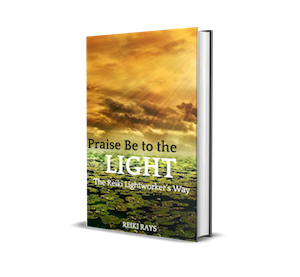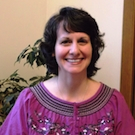Article by Angie Webster
In Western society, we are very protective of the scientific approach and insist that all things be looked at in an intensely logically manner. Science has greatly benefitted the world and is a wonderful tool. However, there is almost a fear of not seeing things through the filter of the hyper critical, extremely logical mind. This approach misses entire areas of the brain. It leaves out intuitive thinking, intention and emotion. In fact, it completely negates their importance in the scientific process, when these things likely play more of a role in the way the world functions than simple logic, facts and figures, more than things that can be directly seen, touched and easily measured. You may have heard the phrase ‘not seeing the forest for the trees’. To me, this stiff approach is much like only seeing a single vein on a single leaf on a single tree and missing the entirety of the rest of the forest.
I often hear very scientific types say they are not satisfied with the evidence that has been shown in studies that Reiki is effective in helping in the care and treatment of illness, pain or immune function. There are a number of studies that show its effectiveness, and more are being completed all the time. However, very scientific people prefer studies that show a specific thing being effective in a specific way, preferably in a laboratory setting. This is not very testable with something like Reiki.

Image by vl8189
Reiki is done through intention, using the natural healing life force energy that is all around us and in us. Very little is scientifically known about how intention works or how it effects the outcome of studies, though what little is known has created some issues for researchers in other studies. It is difficult to examine the validity of the results of a study where the outcome is said to be determined by intention. How do you research intention? Or prove it? Do the researchers’ intentions affect the outcome as well?
It is becoming fairly accepted by more and more in the medical community that Reiki does no harm and that it helps to relieve pain at the very least, and seems to balance the immune system and calm side effects of surgery and chemotherapy drugs in most cases as well. However, many lay people and scientific types as well still wonder if it is simply a placebo effect. And that is considered to be a negative, unscientific thing. Yet, I have always wondered, if it works and it’s safe, what difference does it make what you call it?
I am asked quite often if Reiki is “all in people’s heads”. This question doesn’t offend me at all. I know the mind is quite powerful. Intention is quite powerful. That isn’t something to be defensive about. It is something to embrace fully! It makes no difference to me if someone wants to see Reiki as being “all in my head.” That doesn’t make it less real. Everything starts in your head, with an intention. And then it makes its way into reality. The people asking this question simply don’t understand this yet. This is understandable because most people rarely do the things in their lives with purposeful intention. The intentions are there, but they aren’t aware of them and don’t choose them.
Reiki is a method of consciously and purposely aligning with kind and loving healing energies so that those energies may assist someone in finding their best possible version of themselves, body, mind and spirit. It relieves pain, it eases depression, it boosts the healing response. I think it would be really great if more “proofs” were seen, but truly, as long as it keeps helping people, I don’t care if it’s called a placebo. The healing is real, no matter where it is said to come from.
Free eBook download: We’ve created an eBook with our best articles on this topic, and offer it for free to all our newsletter subscribers.


Angie Webster
Angie Webster is a Reiki Master, Teacher, and Author. Angie’s primary focus is animal Reiki, which she adores. She teaches online Reiki Level One, Animal Reiki, flower essences, and various personal growth courses.
Angie is the author of “Animal Reiki: How it Heals, Teaches & Reconnects Us with Nature” and “Reiki from A to Z”. You can follow her at: https://angie-webster-school-of-reiki.teachable.com




I was having a conversation with my 19 year old nephew yesterday & asked him the same question & his answer was a very succinct what does it matter? I’d it works for you & it helps people, why worry! Love & Light
Exactly! Smart young man!
Excellent and helpful article, and . . Last time I looked, our heads are, in fact, connected to our bodies.
Thank you, Elise! Yes, we can sometimes forget that everything is connected!
Love your explanation Angie!! Put perfectly! Love your articles generally, love learning from your experience x
Thanks, Jackie! Glad you enjoyed it!
My hands really tingle every time I open a post on Reiki xx
Energy is neutral, you need an intention to steer it into a direction and give it a purpose to do it’s required job, the intention is In your head so yes half of it is inside your head, but also without the other half which is being connected to the healing spectrum, your regular energy is not enough to do that healing purpose.
If it’s meaningless to use your head try living without neural connections, you can’t and you wont actually
Angie this is a beautiful article. Thank you! Different conscience levels requires different approach. And Reiki will find the way 🙂